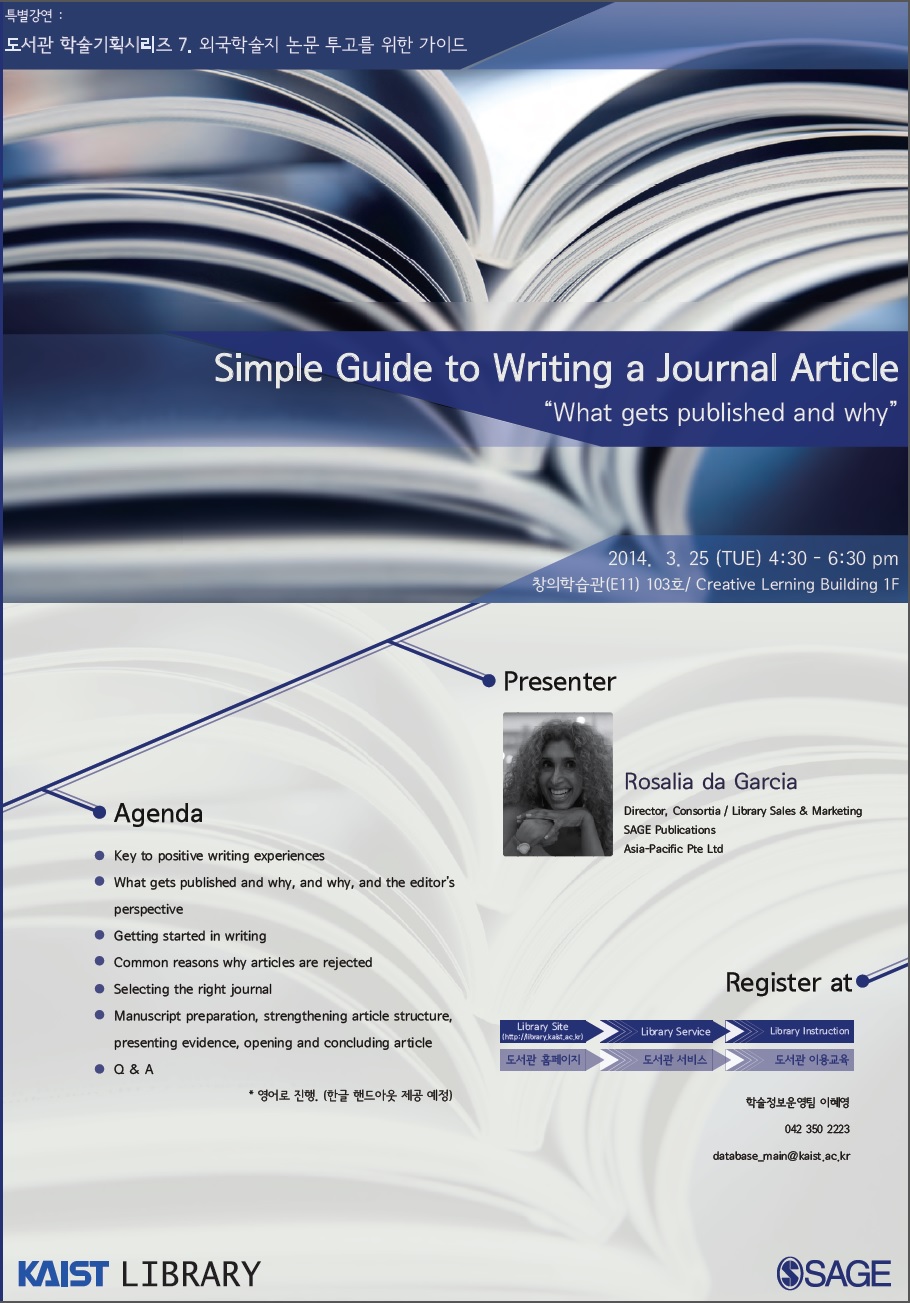As part of its Academic Planning Series, the KAIST Library invited Rosalia da Garcia, Director of SAGE Publications to provide students a week by week guide on writing articles that are more likely to be published in journals.

Garcia explained that weeks one through three should be focused on designing and structuring the paper. The following should be taken into account when writing the article: providing insight into an important issue; deliberating if the insight is important for research development, used for development of a theory, and stimulates the mind for more questions; determining if the methodology was applied thoroughly and correctly in arriving to the conclusion; referencing to prior work; and checking that the article is well written and easy to understand. Then, students should get started by hammering out the topic, rereading the paper, drafting the abstract, reading a model article, and revising the abstract. They should have patience, pay attention to details, give a good first impression, and refrain from sending the article to multiple journals. Garcia introduced common reasons why articles are rejected: too narrow or broad topic, poor structure, content irrelevant to topic, insignificant, not scholarly, theoretically and/or methodologically flawed, too defensive, too many spelling and grammatical errors, not original, and no constructive arguments.
From weeks four to eight, students should focus on a topic, do research, make revisions while writing. First, students should select the journal they wish to publish their article. The importance of selecting the right journal can be summarized by the five R’s: relevance, research’s significance to the community, reputation of journal and its editors, research of references, and rejection rate. Then, related literatures should be reviewed to avoid the following common mistakes: citing one source too much, citing irrelevant literature, overciting definitions, misattributing, citing the citation, quoting too much, and omitting citations. Afterwards, students should strengthen the structure of their article. One suggestion given was to reread the article, outline a model article, outline the one’s own article, and restructure the article. The three sections – methods, results, and discussion – should be kept short and focused. When finished, students should revise the title, introduction, abstract, related literature review, and conclusion.
Upon finalizing the paper in weeks nine and onwards, students should give, get, and use feedback from others. Students should give specific instructions, separate delivery from message, listen first, and take advantage of the criticisms. It is important to be confident but at the same time, exercise some level of humility. Whatever the outcome is, thank the editor. Celebrate the success of the first article and work towards the next article.
SAGE Publications has a YouTube account, and offers a variety of videos on writing journal articles. Students who are interested should visit their Youtube webpage.
DongJae Lee
iowadaniel@kaist.ac.kr

